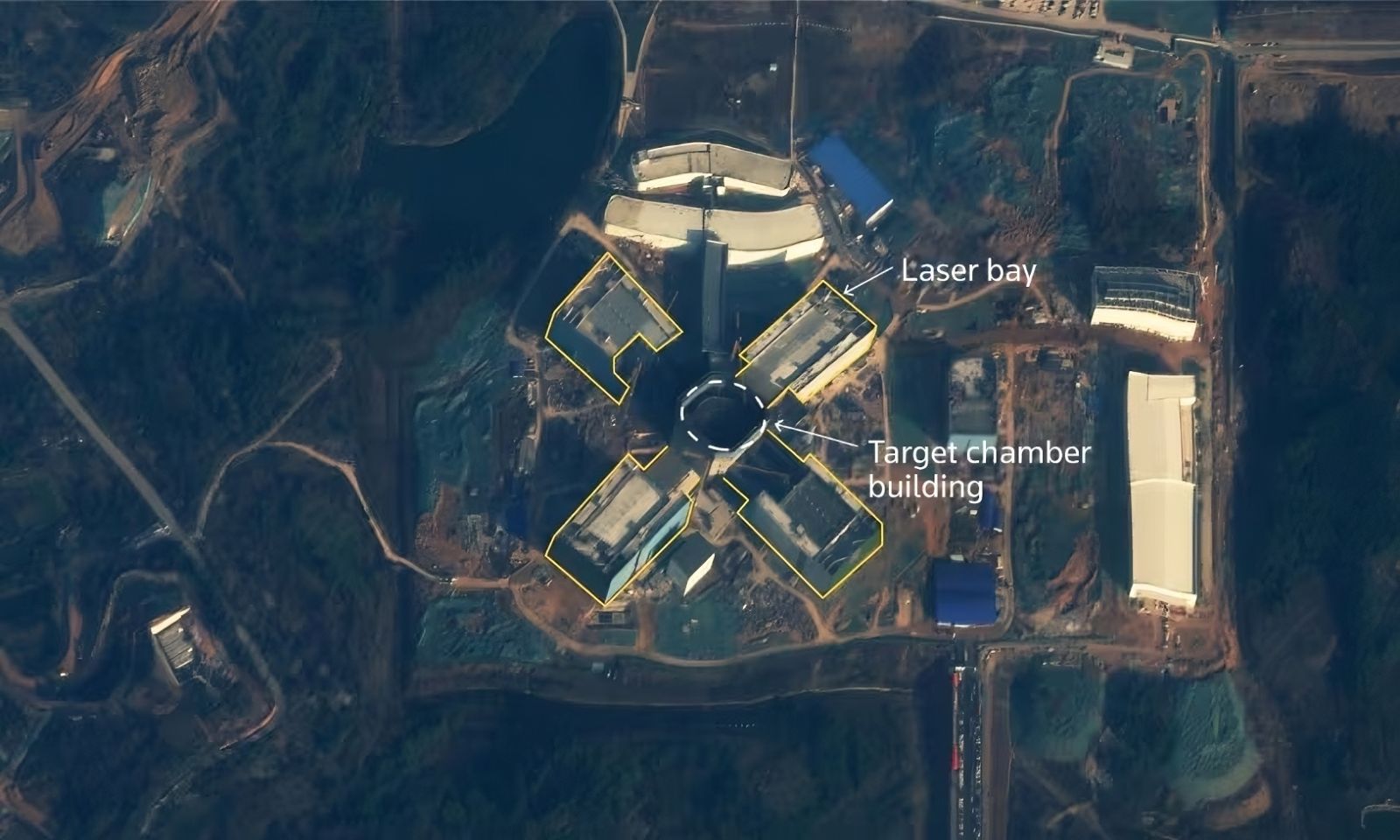Follow us on Google News (click on ☆)
This project, still largely unknown to the general public, intrigues as much as it worries. Laser fusion, a complex technology, aims to replicate the Sun's energy reactions. But beyond its civilian applications, this type of research could also serve to improve nuclear weapons without violating international treaties.

Satellite photo showing a new large-scale laser fusion research center in Mianyang, China.
Image Planet Labs
An extraordinary facility
The Mianyang center surpasses the size of the American National Ignition Facility (NIF). With an experimental bay 50% larger, it could become the world's largest laser fusion site. The four laser arms converging toward a central chamber resemble the structure of the NIF, but on a much more ambitious scale.
This facility is part of a Chinese strategy to catch up in the nuclear field. China has conducted fewer nuclear tests than the United States or Russia, and this laboratory could allow it to simulate explosions and improve its weapons without resorting to real tests.
Laser fusion: energy and defense
Laser fusion involves compressing hydrogen isotopes using ultra-powerful lasers to trigger a nuclear reaction. While this technology is often presented as a solution for clean and unlimited energy, it also interests the military. Indeed, this technology allows for simulating the extreme conditions of a nuclear explosion while complying with international treaties.
In fact, international treaties, such as the Comprehensive Nuclear-Test-Ban Treaty (CTBT), prohibit real nuclear explosions. However, laser fusion experiments are considered "subcritical," meaning they do not produce an uncontrolled chain reaction. They thus allow for studying the properties of nuclear materials and fusion conditions without violating these agreements.
For China, this laboratory represents an opportunity to advance in two key areas: energy and military. However, this duality raises questions about Beijing's true intentions, especially in a context of increasing geopolitical tensions.
An international issue
China is not the only country investing in laser fusion. The United States, France, and other nuclear powers already have similar sites. However, the scale of the Chinese project could redefine technological and strategic balances.
As the race for fusion intensifies, the international community must find a balance between scientific cooperation and the prevention of military risks. This project perfectly illustrates this dual challenge.
To go further: What is nuclear fusion?
Nuclear fusion is a physical reaction where two light atomic nuclei, such as those of hydrogen, fuse to form a heavier nucleus, releasing an immense amount of energy. This process is at work in the Sun and stars, where extreme temperatures and pressures allow nuclei to overcome their electrical repulsion.
Unlike nuclear fission, which splits heavy atoms and produces radioactive waste, fusion is considered a clean and nearly limitless energy source. It uses hydrogen isotopes, such as deuterium and tritium, abundant in nature, and does not generate greenhouse gases.
However, reproducing fusion on Earth is a major technological feat. The reactions require temperatures of several million degrees and effective plasma confinement. Two main approaches are being explored: magnetic confinement fusion and inertial confinement fusion.
If fusion is mastered, it could revolutionize energy production, offering a sustainable alternative to fossil fuels. However, technical and economic obstacles remain significant, and no project has yet achieved net energy production on a large scale.